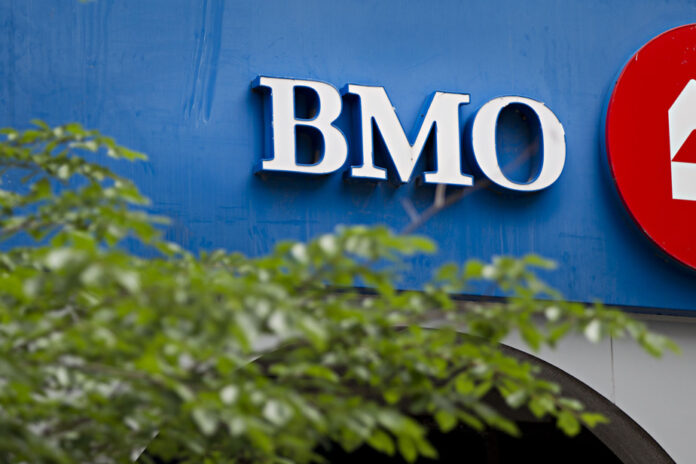(Toronto) A combination of pressures, including slowing economic growth and rising costs, weighed on Canadian banks in their second-quarter quarterly results, which they began reporting Wednesday.
Both Bank of Montreal and Scotiabank reported higher expenses, larger sums of money set aside for bad debts and thinner interest margins, leading the two institutions to rack up lower profits than last year and to disappoint analysts, who had higher expectations.
Bank of Montreal chief executive Darryl White spoke of a “changing environment” that has put pressure on revenue growth.
“The impact of persistent inflation, rising rates, a slowing global economy and growing deposit competition on the industry has accelerated. We are not immune to these market forces,” he said on a conference call with analysts.
His comments came as the bank posted a profit of 1.06 billion for the quarter ended April 30, down 78% from 4.76 billion in the same quarter a year earlier, partly due to adjustments related to its agreement to acquire Bank of the West.
Revenue totaled 8.44 billion, up from 9.32 billion last year.
Scotiabank Chief Executive Scott Thomson said the quarter was marked by “challenging market conditions” as the bank reported net profit down 21% from the previous year. previous year, to 2.16 billion. Scotiabank’s revenue totaled $7.93 billion, down from $7.94 billion in the same quarter last year.
These results come after a quarter marked by turbulence in the American banking system, several large banks, starting with Silicon Valley Bank, having become sufficiently unstable for the regulators to impose their sale.
The banking crisis was created in part by rapidly rising interest rates, which also put pressure on mortgage-holding households and bank interest markups as consumers seek better rates on their deposits .
“The recent market turmoil in the United States has added an element of financial uncertainty,” Scotiabank chief risk officer Phil Thomas said on a conference call with investors.
The bank noted that its portfolio of Canadian mortgages remained strong despite higher rates, as customers cut back on other spending.
“Our customers are going through this period of high interest rates by making compromises. For example, discretionary spending such as retail spending and entertainment spending is down 10% year-over-year for our customers [whose mortgage is] variable rate. »
He said loan delinquency rates were showing a modest upward trend and the bank expected bad debt provisions to remain high for the year, but he remained comfortable with the bank’s position for future economic cycles.
Bank of Montreal, which closed its $16.3 billion deal with Bank of the West during the quarter, said the failure of some U.S. banks added volatility to the market during the quarter.
“Looking ahead, we are cautious about the economic environment,” observed Piyush Agrawal, director of risk management at Bank of Montreal.
The bank’s provision for credit losses was $1.02 billion, down from just $50 million in the second quarter of last year.
On the Scotia side, provisions for credit losses totaled $709 million, up from $219 million a year ago.
Inflation also weighed on results, with Bank of Montreal reporting spending up 50% in the quarter compared to a year ago, with costs associated with the acquisition of Bank of the West of the rise. Scotia’s spending increased 10% in the quarter compared to the previous second quarter.
Bank of Montreal’s adjusted earnings per share were $2.93, down from $3.23 a year ago. It was also below analysts’ expectations of $3.19 per share, according to estimates compiled by financial markets data firm Refinitiv.
Scotiabank posted an adjusted profit of $1.70 per share for the most recent quarter, compared to $2.18 in the same quarter last year. Analysts on average had expected a profit of $1.78 per share, according to Refinitiv forecasts.















